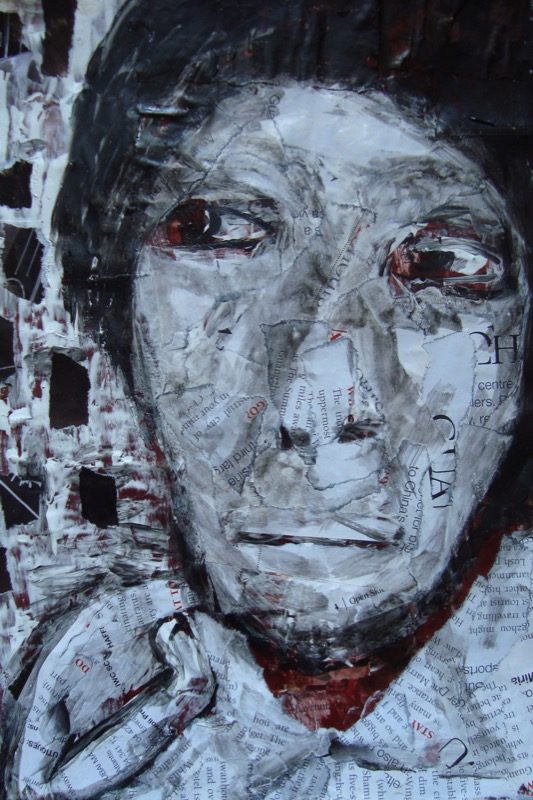The theme of the exhibition is as intriguing as Cambodia itself: a land in which events of the past 50 years continue to weigh on people, even those far too young to have witnessed them.
“Cambodia: Looking Back on the Future,” opening today in the U.S., will feature the works of 11 artists as well as performance art staged by Cambodian-American Amy Sandford.

Curated for the Flinn Gallery at the public library in Greenwich, Connecticut, an affluent small town on the outskirts of New York City, the exhibition will include film screenings—Rithy Panh’s “The Missing Picture” and John Pirozzi’s “Don’t Think I’ve Forgotten: Cambodia’s Lost Rock and Roll”—a Cambodian music concert, talks, panel discussions and book readings.
“The theme is meant as a play on words, or rather a play on time,” said Dana Langlois of JavaArts in Phnom Penh, one of the show’s three curators, last week. “It’s this reference to…the way that artists kind of situate themselves in multiple time periods: this idea of the past, history, sense of cultural that are attached to identity.”
An installation in the center of the exhibition hall will embody this “play on time.” Created by artist Leang Seckon, his “Flowering Parachute Skirt” consists of a parachute left by a U.S. soldier, probably around 1968, and retrieved by Buddhist monks in his Melop village pagoda in Prey Veng province’s Pea Reang district.
Mr. Seckon obtained it from the monks and took it to New York City. There, Cambodian and Vietnamese women who had come to the U.S. as war refugees helped sew on flower appliques out of fabric given to Mr. Seckon by women from his home village.
In the show, the U.S. parachute will be worn by a mannequin of a soldier, adorned with the insignias of all the foreign and domestic armies that fought in Cambodia’s wars of the late 20th century: a symbol of the soldier at last come home with hopes to celebrate peace, Mr. Seckon said on Wednesday. “The parachute becomes beauty…like the mist of a cloud turning into rain to give life so flowers can grow.”
The exhibition includes the work of several generations of artists. Lim Muy Theam and Chath pierSath were children during the Khmer Rouge regime while Oeur Sokuntevy and Kong Vollak were born afterward. Some, such as Heng Ravuth, have spent their lives in Cambodia and others, including Anida Yoeu Ali, moved abroad as child refugees.
And yet, no matter their paths, all the artists’ lives were affected by the turmoil of the 1970s and 1980s, said Barbara Richards, chair of the gallery and one of the exhibition curators.
“Most of the artists…had some family experience with the Khmer Rouge. It wasn’t what ran them or dictated their responses to the world, but it impacted them and how they focused on their future,” she said on Tuesday.
Debra Fram, an executive committee member of the Flinn Gallery and one of the show’s curators, came up with the idea for the contemporary art exhibition.
Having visited Cambodia in 2015 at the invitation of Prim Phloeun of Cambodian Living Arts, she returned with a plan to make the U.S. public aware that there is more to Cambodia than the Khmer Rouge and Angkor Archaeological Park, she said on Tuesday.
“We hope that our visitors will gain a greater understanding of who Cambodia is today and, in turn, will be interested in learning and seeing more,” she said.
The exhibit opens tonight at the Flinn Gallery in Greenwich, Connecticut, and continues through June 14. Admission is free.
Correction: A previous version of this article misspelled the name of artist Anida Yoeu Ali.